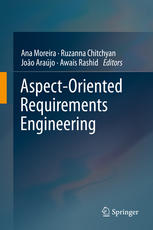

Most ebook files are in PDF format, so you can easily read them using various software such as Foxit Reader or directly on the Google Chrome browser.
Some ebook files are released by publishers in other formats such as .awz, .mobi, .epub, .fb2, etc. You may need to install specific software to read these formats on mobile/PC, such as Calibre.
Please read the tutorial at this link: https://ebookbell.com/faq
We offer FREE conversion to the popular formats you request; however, this may take some time. Therefore, right after payment, please email us, and we will try to provide the service as quickly as possible.
For some exceptional file formats or broken links (if any), please refrain from opening any disputes. Instead, email us first, and we will try to assist within a maximum of 6 hours.
EbookBell Team

4.0
66 reviewsBroadly-scoped requirements such as security, privacy, and response time are a major source of complexity in modern software systems. This is due to their tangled inter-relationships with and effects on other requirements. Aspect-Oriented Requirements Engineering (AORE) aims to facilitate modularisation of such broadly-scoped requirements, so that software developers are able to reason about them in isolation - one at a time. AORE also captures these inter-relationships and effects in well-defined composition specifications, and, in so doing exposes the causes for potential conflicts, trade-offs, and roots for the key early architectural decisions.
Over the last decade, significant work has been carried out in the field of AORE. With this book the editors aim to provide a consolidated overview of these efforts and results. The individual contributions discuss how aspects can be identified, represented, composed and reasoned about, as well as how they are used in specific domains and in industry. Thus, the book does not present one particular AORE approach, but conveys a broad understanding of the aspect-oriented perspective on requirements engineering. The chapters are organized into five sections: concern identification in requirements, concern modelling and composition, domain-specific use of AORE, aspect interactions, and AORE in industry.
This book provides readers with the most comprehensive coverage of AORE and the capabilities it offers to those grappling with the complexity arising from broadly-scoped requirements - a phenomenon that is, without doubt, universal across software systems. Software engineers and related professionals in industry, as well as advanced undergraduate and post-graduate students and researchers, will benefit from these comprehensive descriptions and the industrial case studies.